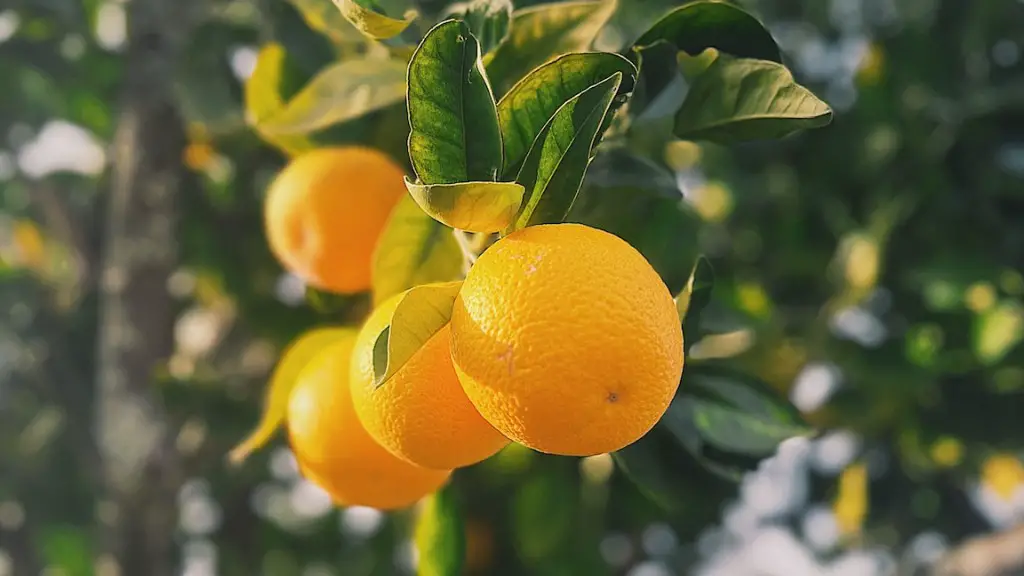Owning a lemon tree has many benefits, including a higher vitamin C content in the fruit and an abundance of medicinal properties. It also adds a charming aesthetic to the home, with its graceful leaves and fragrant white blooms. You may wonder if it is possible to keep a lemon tree indoors, especially if you live in a humid or tropical climate. The answer is yes, provided that you have the required conditions and knowledge to properly care for it.
There are several things to consider before putting a lemon tree inside. Firstly, lemon trees need a lot of sun, so make sure that your chosen spot has plenty of light. Direct sunlight should be avoided, though, as this can cause the leaves to burn and damage. Secondly, lemon trees need plenty of space, so ensure that the pot isn’t too small. If it’s not big enough you must re-pot it into a larger container, taking care not to damage the roots in the process.
The environment in which your lemon tree lives also needs to be taken into account. Lemon trees should never be kept in temperatures lower than 15⁰C. Additionally, during the winter, the atmosphere should be kept as humid as possible, either by misting the leaves regularly or placing a humidifier nearby. Additionally, good air circulation is important, so a fan should also be placed next to the tree.
In terms of soil, lemon trees need it to have excellent drainage. If the soil starts to compact, repot the lemon tree and add some sand or other additives to help with draining the excess water. The pH of the soil should also be tested, as lemons thrive in slightly acidic soil, ranging between 6 and 6.5.
Fertilizing the lemon tree is crucial; they need it every month, except during winter and only with a special citrus fertilizer. When watering your lemon tree, make sure that you avoid over-watering it. The top layer of the soil should feel dry to the touch, and you should lower the amount of water during winter.
Finally, regularly prune your lemon tree as to regulate its growth. Pruning your lemon should be done every few months, at least, so as to get rid of dead branches and keep the tree’s health. The branches which don’t grow fruits should be pruned and the ones which do should be left; the soil needs to be regularly checked to ensure fertility.
Choosing The Appropriate Pot
When deciding to bring a lemon tree indoors, you must also consider the pot in which you plan to plant it. It’s important to choose one that is made of an appropriate material, such as terracotta or plastic. Plastic pots are best for humid climates as they retain moisture better, whereas terracotta pots provide a better amount of air circulation which is essential for the tree’s health. Additionally, it’s advisable to pick one that has drainage holes, so that excess water can be released.
Gassing the Tree
In order to keep the lemon tree healthy, it’s important to make sure that it’s not subjected to excessive amounts of fumes or smog. This is known as ‘gassing’ and it’s most likely to occur in cities where air pollution is an issue. To ensure that your lemon tree is safe, cover it while you’re using the oven, running the heater or using a stove, as well as when you’re driving in your car.
Taking Care of The Spread of Diseases
In order to prevent the spread of diseases, it’s important to check the tree weekly for signs of rot or mildew. If noticed, take the proper steps to combat the issue, such as pruning the affected branches, using special solutions, or using more aggressive solutions such as fungicides. Additionally, make sure that there are no insects nearby which can attack the tree, and monitor the fruits to make sure that they don’t show signs of disease.
Proper Automated Watering System
An automated watering system is an essential component for lemon trees when you are keeping them indoors. Most of these systems come with easy-to-follow instructions and can be set to water the tree at regular intervals. This ensures that the tree receives enough water without the risk of over-watering, and without the need to manually water it. Most importantly, automated systems are affordable and easy to install, so there is no need to worry about complicated setup and maintenance.
Regularly Pruning Branches
Regularly pruning branches is one of the most important steps when caring for a lemon tree. Pruning encourages new growth and prevents the branches from becoming too heavy and damaging the tree. When pruning, only remove dead branches or those which are too weak to hold the fruits. Additionally, prune the tips of the branches in order to encourage the new growth of leaves. Always make sure to use sharp, clean pruning shears when cutting the branches, in order to avoid the spread of diseases.
